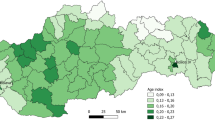Abstract
Emergency services are an important element for healthcare assistance because its rapid response to transportation is essential for saving lives. Cartagena de Indias presents some weaknesses in terms of covering the demand for emergency transfers from insular areas due to the non-existence of terrestrial routes to hospitals and healthcare facilities. This study aims to determine the optimal location for sea ambulances using a mixed-integer linear programming model. A three-staged methodology allowed to select optimal locations, reducing response times of emergencies for vulnerable populations considering available healthcare facilities and maritime safety requirements.
Access this chapter
Tax calculation will be finalised at checkout
Purchases are for personal use only
Similar content being viewed by others
References
Ahmadi-Javid, A., Seyedi, P., Syam, S.S.: A survey of healthcare facility location. Comput. Opera. Res. 79, 223–263 (2017). https://doi.org/10.1016/j.cor.2016.05.018
Alcaraz, J., Landete, M., Monge, J.F., Sainz-Pardo, J.L.: Strengthening the reliability fixed-charge location model using clique constraints. Comput. Operat. Res. 60, 14–26 (2015). https://doi.org/10.1016/j.cor.2015.02.003
Ballou, R.H.: Logística: Administración de la cadena de suministro, 5th edn. Pearson Educación, Ciudad de México (2004)
Bélanger, V., Kergosien, Y., Ruiz, A., Soriano, P.: An empirical comparison of relocation strategies in real-time ambulance fleet management. Comput. Ind. Eng. 94, 216–229 (2016). https://doi.org/10.1016/j.cie.2016.01.023
Bélanger, V., Ruiz, A., Soriano, P.: Recent optimization models and trends in location, relocation, and dispatching of emergency medical vehicles. Eur. J. Oper. Res. 272(1), 1–23 (2019). https://doi.org/10.1016/j.ejor.2018.02.055
Berkelaar, M., Eikland, K., Notebaert, P.: lpsolve: open source (mixed-integer) linear programming system, version 5.5.0.15. (2005)
Berman, O., Simchi-Levi, D.: Conditional location problems on networks. Transp. Sci. 24(1) (1990)
Bozorgi-Amiri, A., Tavakoli, S., Mirzaeipour, H., Rabbani, M.: Integrated locating of helicopter stations and helipads for wounded transfer under demand location uncertainty. Am. J. Emerg. Med. 35(3), 410–417 (2017). https://doi.org/10.1016/j.ajem.2016.11.024
Caliskan, C., Altintas, K.H.: Time, island and ambulance type characteristics of patient transfers from two Turkish islands: Gökçeada and Bozcaada. Int. J. Emerg. Serv. 9(1), 47–55 (2019). https://doi.org/10.1108/IJES-12-2018-0065, https://www.emerald.com/insight/content/doi/10.1108/IJES-12-2018-0065/full/html
Dantrakul, S., Likasiri, C., Pongvuthithum, R.: Applied p-median and p-center algorithms for facility location problems. Expert Syst. Appl. 41(8), 3596–3604 (2014). https://doi.org/10.1016/j.eswa.2013.11.046
Daskin, M.: A maximum expected covering location model: formulation, properties and heuristic solution. Transp. Sci. 17(1), 48–70 (1983)
Dibene, J.C., Maldonado, Y., Vera, C., de Oliveira, M., Trujillo, L., Schütze, O.: Optimizing the location of ambulances in Tijuana, Mexico. Comput. Biol. Med. 80, 107–115 (2017). https://doi.org/10.1016/j.compbiomed.2016.11.016
Farahani, R.Z., Hekmatfar, M., Fahimnia, B., Kazemzadeh, N.: Hierarchical facility location problem: models, classifications, techniques, and applications. Comput. Ind. Eng. 68, 104–117 (2014). https://doi.org/10.1016/j.cie.2013.12.005
Hakimi, S.L.: Optimum locations of switching centers and the absolute centers and medians of a graph. Oper. Res. 12(3), 450–459 (1964). https://doi.org/10.1287/opre.12.3.450
He, Z., Fan, B., Cheng, T., Wang, S.Y., Tan, C.H.: A mean-shift algorithm for large-scale planar maximal covering location problems. Eur. J. Oper. Res. 250(1), 65–76 (2016). https://doi.org/10.1016/j.ejor.2015.09.006
Nickel, S., Reuter-Oppermann, M., Saldanha-da Gama, F.: Ambulance location under stochastic demand: a sampling approach. Oper. Res. Health Care 8, 24–32 (2016). https://doi.org/10.1016/j.orhc.2015.06.006
Schmid, V., Doerner, K.F.: Ambulance location and relocation problems with time-dependent travel times. Eur. J. Oper. Res. 207(3), 1293–1303 (2010). https://doi.org/10.1016/j.ejor.2010.06.033
Shahriari, M., Bozorgi-Amiri, A., Tavakoli, S., Yousefi-Babadi, A.: Bi-objective approach for placing ground and air ambulance base and helipad locations in order to optimize EMS response. Am. J. Emerg. Med. 35(12), 1873–1881 (2017). https://doi.org/10.1016/j.ajem.2017.06.026
Villegas, J.G.: Problemas de localización multiobjetivo. Ph.D. thesis (2004)
Zaffar, M.A., Rajagopalan, H.K., Saydam, C., Mayorga, M., Sharer, E.: Coverage, survivability or response time: a comparative study of performance statistics used in ambulance location models via simulation-optimization. Oper. Res. Health Care 11, 1–12 (2016). https://doi.org/10.1016/j.orhc.2016.08.001
Author information
Authors and Affiliations
Corresponding author
Editor information
Editors and Affiliations
Rights and permissions
Copyright information
© 2021 Springer Nature Switzerland AG
About this paper
Cite this paper
Coronado-Hernández, J.R., Rico-Carrillo, M., Rico-Carrillo, K., Altamiranda, O.Z. (2021). Locating Sea Ambulances to Respond to Emergencies of Vulnerable Populations. Case of Cartagena Bay in Colombia. In: Saeed, K., Dvorský, J. (eds) Computer Information Systems and Industrial Management. CISIM 2021. Lecture Notes in Computer Science(), vol 12883. Springer, Cham. https://doi.org/10.1007/978-3-030-84340-3_21
Download citation
DOI: https://doi.org/10.1007/978-3-030-84340-3_21
Published:
Publisher Name: Springer, Cham
Print ISBN: 978-3-030-84339-7
Online ISBN: 978-3-030-84340-3
eBook Packages: Computer ScienceComputer Science (R0)




